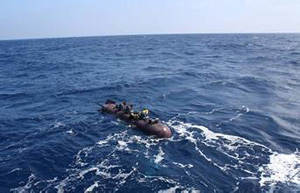 So far, the world mainly loaded submersible dive completed nearly 10,000 jobs, a number of major scientific discoveries can be seen in figure submersible load, load submersible plays in marine scientific research in Vietnam increasingly important role. High-strength solid buoyancy material is an important part of modern diving technology, ensuring the submersible buoyancy, increasing payload submersibles, reducing its size, has an important role.
So far, the world mainly loaded submersible dive completed nearly 10,000 jobs, a number of major scientific discoveries can be seen in figure submersible load, load submersible plays in marine scientific research in Vietnam increasingly important role. High-strength solid buoyancy material is an important part of modern diving technology, ensuring the submersible buoyancy, increasing payload submersibles, reducing its size, has an important role.Solid buoyant material commonly used high-strength composite resin and buoyancy adjustment mechanism is made of hollow glass microspheres which are the main buoyancy adjustment mechanism. Especially when applied to deep-sea areas, in order to guarantee the buoyancy material has high compressive strength greater good safety and reliability, generally only use high-strength hollow glass microspheres and resin composite material. In addition, in order to prepare low density buoyancy material, volume fraction of the hollow glass microspheres is generally higher, 60% to 70%.
When solid buoyancy material for use on underwater vehicles and operating equipment, primarily to provide buoyancy to play its role, but with the dive depth increases, if the absorbent material, increase the density of the material, so that the material can be provided to reduce the buoyancy. Therefore, it requires buoyancy material has good resistance to hydrostatic pressure and low water absorption properties to prevent the loss of buoyancy phenomenon.
At present, China is still no national standard on buoyancy material, water absorption generally follow standard industry deepwater buoyancy material is not more than 2%. By research material showed that with the increase of K20 content of glass bubbles, beads mixed performance hydrostatic pressure buoyancy materials decreased. When the glass bubbles K20 content below 10%, the water absorption of the composite material has remained the same, less than 0.2%, the corresponding composite material can withstand the hydrostatic pressure above 10MPa. When the K20 content increased to 20%, the water absorption of the material has increased, but under hydrostatic pressure 85MPa, the water absorption material still maintained at 2% or less. With the continued increase in the content of K20, hydrostatic pressure performance continues to decline, but the content of K20 glass bubbles at 50% to 100%, in the case of 2% water absorption, resistance to hydrostatic pressure of composites is still 50 ~ between 23MPa. Therefore, according to industry buoyancy requirements of different material properties can be adjusted by the material properties of buoyancy ratio of hollow glass microspheres in order to achieve the optimal design of materials.
This article comes from material development and application editor released





